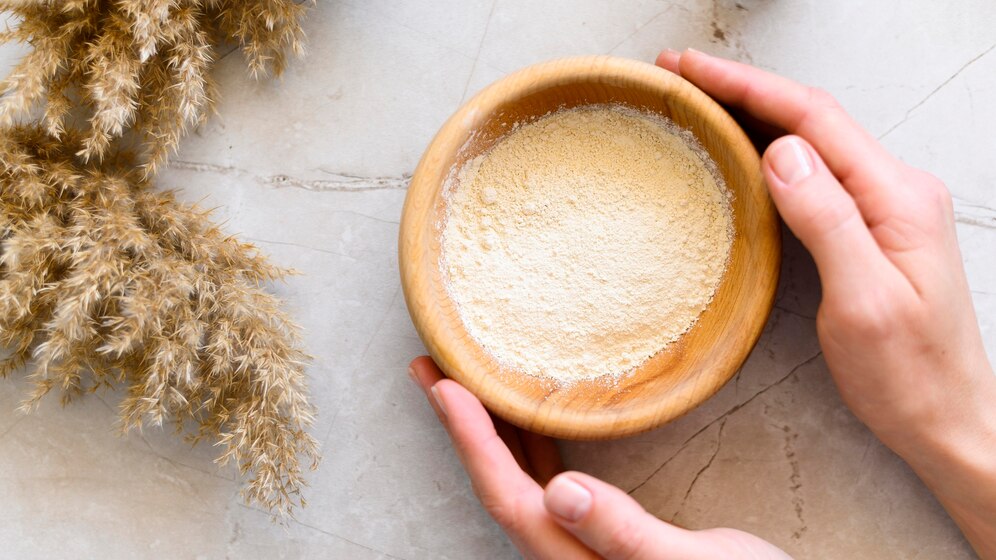Introduction
If you’re looking for a semolina flour substitute, there are a few options available to you. Semolina is a type of wheat flour that’s made from durum wheat, and it’s commonly used in pasta and couscous. While it can be difficult to find in some stores, there are a few substitutes that can be used in its place.
One option is to use all-purpose flour in place of semolina. All-purpose flour is made from a blend of wheat flours, and it can be used in most recipes that call for semolina. It may not produce the same results as semolina, but it will still work well in most dishes.
Another option is to use bread flour in place of semolina. Bread flour is made from a higher protein wheat flour, which gives it a higher gluten content. This makes it better suited for baked goods like breads and rolls, but it can also be used in pasta and couscous recipes.
finally, you could also use whole wheat flour as a substitute for semolina. Whole wheat flour is made from the entire wheat grain, including the bran and germ. This gives it a nutty flavor and a coarser texture than other types of wheat flour. It’s best used in hearty recipes like breads and casseroles, but it can also be used in place of semolina in some pasta dishes.
Popular Semolina Flour Substitutes
There are a few popular substitutes for semolina flour that you may already have in your pantry. All-purpose flour is the most common substitute for semolina flour. It can be used in place of semolina flour at a 1:1 ratio in most recipes. Another popular substitute for semolina flour is whole wheat flour. Whole wheat flour will add a nutty flavor to your dish and has a higher protein content than all-purpose flour. It can be used in place of semolina flour at a 1:1 ratio as well. Finally, breadcrumbs can also be used as a substitute for semolina flour. Breadcrumbs will give your dish a crunchy texture and are typically used as a topping or coating.
1. All-purpose Flour
All-purpose flour is the most commonly used type of flour and can be found in most home kitchens. It’s made from a blend of hard and soft wheat flours and has a medium protein content, making it a versatile option for baking. All-purpose flour can be used for cakes, cookies, quick breads, pancakes, waffles, and some yeast breads.
2. Whole Wheat Flour
If you’re looking for a semolina flour substitute that’s whole grain, opt for whole wheat flour. This type of flour is made from grinding the entire wheat kernel, meaning it retains all of the grain’s health benefits. Whole wheat flour is higher in fiber and nutrients than its refined counterpart, making it a healthier option overall. When substituting whole wheat flour for semolina, use a 1:1 ratio.
3. Quinoa Flour
If you’re looking for a gluten-free semolina flour substitute, quinoa flour is a great option. This nutritious flour is made from ground quinoa and has a similar texture to wheat flour. Quinoa flour can be used in a variety of recipes, including breads, pancakes, and cookies. It’s also a good source of protein and fiber.
4. Corn Semolina
Corn semolina is a coarsely ground flour made from corn that’s used in place of wheat semolina. It has a slightly sweet flavor and yellow color. Because it’s lower in gluten than wheat flour, it can be used as a partial or complete replacement for semolina in most recipes. While it doesn’t have the same absorbency as wheat semolina, corn semolina can be used to make pasta, breads, cakes, and cookies.
5. High-gluten Flour
If you’re looking to substitute semolina flour in a recipe that calls for high-gluten flour, then you’re in luck. There are several options available that will work just as well in your baking.
One option is to use all-purpose flour. All-purpose flour is made from a blend of wheat flours and typically has a gluten content between 8 and 12%. This makes it a great choice for recipes that call for high-gluten flour, as it will provide the necessary structure and rise.
Another option is bread flour. Bread flour is made from a higher protein wheat, which gives it a higher gluten content. It’s perfect for recipes that require extra strength and stability, such as breads, rolls, and pizza crusts.
A third option is whole wheat flour. Whole wheat flour contains all parts of the wheat grain, including the bran and germ. This means it has a higher fiber content than other types of flour, but it also has a lower gluten content. If you’re using whole wheat flour to substitute for high-gluten flour, you may need to add additional leavening agent to help with rising.
6. Pastry Flour
Pastry flour is a type of flour that is milled from soft wheat. It has a lower protein content than all-purpose flour, making it ideal for baked goods that are delicate or require a tender texture, such as pies, pastries, tarts, and biscuits.
When substituting semolina flour for pastry flour, keep in mind that semolina flour is higher in protein and will produce a more dense baked good. For this reason, you may want to add an extra egg to your recipe to help lighten the batter or dough. You can also substitute half of the semolina flour for all-purpose flour to produce a lighter baked good.
7. Bread Flour
Bread flour is a type of flour that is made from wheat that has been milled to a very fine consistency. It has a high protein content, which makes it ideal for baking bread. Bread flour is also known as strong flour or hard wheat flour. It is available in both bleached and unbleached varieties.
8. Rye Flour
Rye flour is a type of flour made from rye grain. It is a versatile flour that can be used for many different purposes, including baking, making bread, and thickening soups or sauces. Rye flour has a slightly nutty flavor and can be found in most grocery stores.
9. Garbanzo Flour
Garbanzo flour is a great alternative to semolina flour for those with gluten sensitivities or who are looking for a healthier option. This type of flour is made from ground chickpeas, which are a good source of protein and fiber. Garbanzo flour can be used in place of semolina flour in most recipes, and it will add a nutty flavor to your dishes.
10. Almond Flour
There are many semolina flour substitutes available, but almond flour is one of the best. Almond flour is a nutritious alternative to semolina flour and can be used in many recipes.
Almond flour is made from ground almonds, which are a rich source of nutrients like vitamin E, magnesium, and fiber. This makes almond flour a healthier option than semolina flour. Additionally, almond flour has a lower glycemic index than semolina flour, meaning it won’t cause spikes in blood sugar levels.
Because it is gluten-free, almond flour is also a good option for those with celiac disease or gluten intolerance. And, because it’s less refined than semolina flour, almond flour retains more of the nutrients found in almonds.
So if you’re looking for a nutritious and delicious semolina flour substitute, look no further than almond flour!
11. Rice Flour
Rice flour is a popular semolina flour substitute because it is gluten-free. It can be used in recipes that call for semolina flour, or you can use it to make your own gluten-free flour blend. Rice flour is made from ground rice and has a slightly sweet flavor. It is available in both white and brown varieties. Brown rice flour has a nuttier flavor and contains more nutrients than white rice flour. When substituting rice flour for semolina flour, use 1 cup of rice flour for every 1 cup of semolina flour called for in the recipe.
12. Amaranth Flour
Amaranth flour is a gluten-free grain flour that can be used as a semolina flour substitute in many recipes. This flour is made from the amaranth plant, which is a species of flowering plant in the Amaranthaceae family. The amaranth plant is native to Mexico and Central America, and the grain has been used for centuries by the Aztecs and other indigenous peoples of the region.
Amaranth flour is high in protein and fiber, and it has a nutty flavor. This flour can be used in place of semolina flour in most recipes, including pasta, bread, and biscuits. When using amaranth flour as a semolina substitute, you may need to add more liquid to your recipe since this flour is absorbent.
Final Words
When it comes to flour, semolina is one of the most versatile. It can be used in everything from baking the Best donuts, pasta, cakes, cookies, and many more.



